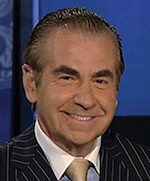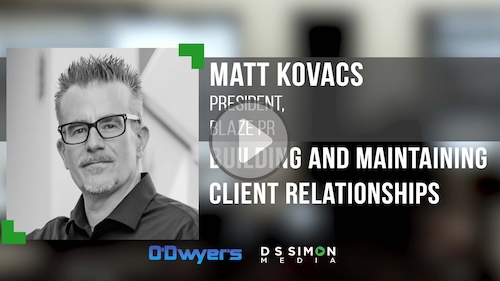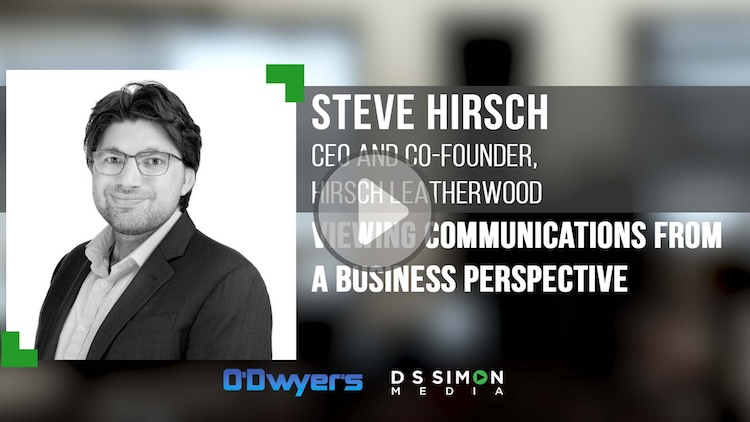 |
| Fraser Seitel |
“Orthodoxy means not thinking—not needing to think. Orthodoxy is unconsciousness.”
― George Orwell, "1984"
Among the lasting tragedies of the Trump era is the assault on freedom of speech and the triumph of mob rule.
Ever since George Floyd was murdered in May at the knee of a crazed Minneapolis cop, freedom of speech has been subordinated in a mad frenzy to expose bigots behind every rock, from Jimmy Fallon and Jimmy Kimmel appearing in blackface 20 years ago to deep-sixing Christopher Columbus to hatcheting the Atlanta Braves’ tomahawk chop.
The essence of so-called “cancel culture” is that everything must go, no questions asked. This intensifying phenomenon should be of concern to all communicators, including public relations counselors, whose employment and reputation depend on speaking boldly, dispassionately and freely.
And in the post-#MeToo/post-George Floyd era, should some brave but naïve soul have the audacity to challenge the appropriateness or logic or fairness of jumping on whatever bandwagon the mob currently favors, they’re immediately categorized as “sexist” or “racist” or “unwoke.” The result: Few challenge the zealots and freedom of speech evaporates.
Much of this, of course, can be traced to the reign of Donald Trump, who’s inflamed such blind loyalty among his supporters and extreme hatred among his detractors that any chance at compromise or understanding or even listening to someone else’s point-of-view is impossible. (Ironically, lately Trump, himself, has begun repeating the mantra that he stands for “freedom of speech,” although he doesn’t really.)
But Trump and political partisans aren’t the only culprits in the demise of open-mindedness and compromise and objectivity. Schools, professors, news organizations, journalists, athletes and artists from musicians to actors all share the blame in elevating bullies as the ultimate arbiters of acceptable thought.
In July, Harper’s published a bold open letter from 153 prominent—many of them, left-leaning—artists and intellectuals warning of this insidious trend of “an intolerance of opposing views, a vogue for public shaming and ostracism and the tendency to dissolve complex policy issues in a blinding moral certainty.”
The letter, which argued against “groupthink” as well as silencing those who oppose common wisdom, was orchestrated by African-American columnist Thomas Chatterton Williams, who noted that the signatories included “plenty of Black thinkers, Muslim thinkers, Jewish thinkers, people who are trans and gay, old and young, right wing and left wing.”
Mr. Williams and his co-signers didn’t have to wait long to prove their point. Almost immediately, Twitter and its competing social media platforms lit up with criticism and vitriol, ostracizing and ridiculing the signatories for, as the Times put it, “thin-skinnedness, privilege and … fear of loss of ‘relevance.’”
Sure enough, the outpouring of social media mob vitriol caused several of those who had signed the letter—including one mortified New York Times’ opinion columnist—to turn tail immediately and ask that their names be removed from the original missive. So much for freedom of speech and the courage of one’s convictions.
A few days later, another Times’ columnist, Bari Weiss, caused a stir by resigning over what she claimed, in a letter on her website, was a civil war at the paper between “(most young) wokes and (mostly 40+ liberals”), one of whom was herself. On her way out, Ms. Weiss warned erstwhile associates at the world’s greatest newspaper, “Never believe an editor or publisher who urges you to go against the grain. Eventually, the publisher will cave to the mob, the editor will get fired or reassigned, and you’ll be hung out to dry.”
Anyone who wonders about “objectivity” at today’s New York Times no longer need wonder.
Which brings us to the role of public relations advisors in this climate of go along to get along or risk the wrath of the thought police (as opposed to the real police, who are personae non gratae). Where do you, personally, come out in this important, current dilemma?
Here are two recent real-life cases, one national and one local, that may help determine where you stand. In each case, what would your counsel be?
The first case is that of the New York Times, which in June ran a controversial op-ed piece by pro-Trump Republican Senator Tom Cotton, calling for the President to activate the military to quell violent street protests in cities like Portland (which a month later, Trump did).
The Cotton op-ed immediately triggered an insurrection in the Times’ newsroom, led by African-American staff members, one of whom tweeted that the Cotton op-ed “puts Black @NYTimes staff in danger.” The Times’ tweetstorm was followed by a letter from more than 800 apparently equally-petrified staff members protesting the paper’s decision to publish the op-ed. And calls rang out for the Times to fire editorial page editor James Bennet, who’d worked at the paper for 20 years.
Question: If New York Times Publisher A.G. Sulzberger and Executive Editor Dean Baquet were your clients, what would you recommend they do?
The second case occurred in July in an affluent New York City suburb, when photos were anonymously sent to social and traditional media and public officials featuring a member of the local high school board of education wearing blackface.
The 30-year-old trustee admitted he’d naively worn the blackface at a Halloween party 12 years ago as a teenager, when, frankly, he didn’t know any better. He explained he’d never again done such a thing, apologized profusely to those offended and begged the community to allow him to undo his wrong through wiser, more mature and sensitive actions.
What followed was an online petition signed by 2,700 concerned citizens seeking the young man’s immediate resignation and an emergency seven-hour board meeting, lasting until 3 in the morning, in which residents lined up to express their hurt and humiliation over the scurrilous 2008 photo. Typical was the response of one recent graduate, wise beyond her years, “I’m 17-years-old and I would never wear blackface.”
Question: What do you recommend your clients, the other eight members of the school board, do?
In both cases, the accused individuals were summarily fired by their employers. (Well, technically they each “resigned,” but c’mon.)
Mr. Bennet was quickly thrown overboard by his long-time colleagues Messrs. Sulzberger and Baquet, two of the weakest of weak-kneed media managers. And the young trustee was voted out by seven of his brave band of board brothers, one of whom summed things up this way: "By stepping down he shows our students that the behavior will not be tolerated. Students are craving diversity, and with that diversity brings true understanding and reform."
And also, one might add, another nail in the slowly sinking coffin of freedom of speech.
***
Fraser P. Seitel has been a communications consultant, author and teacher for 40 years. He is author of the Pearson text “The Practice of Public Relations,” now in its 14th edition, and co-author of “Rethinking Reputation" and "Idea Wise.” He may be reached directly at [email protected].










 Have a comment? Send it to
Have a comment? Send it to 
No comments have been submitted for this story yet.